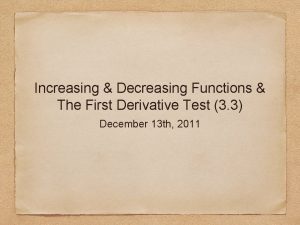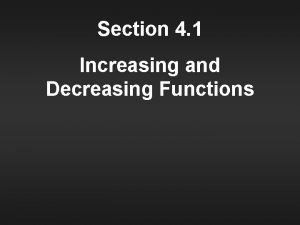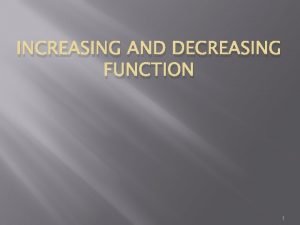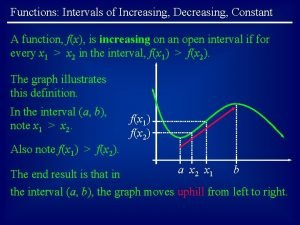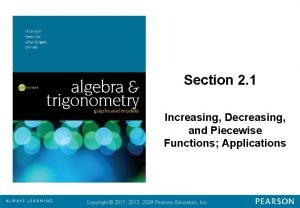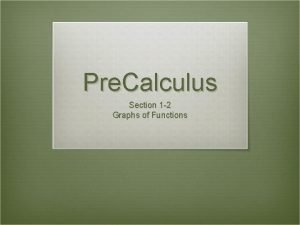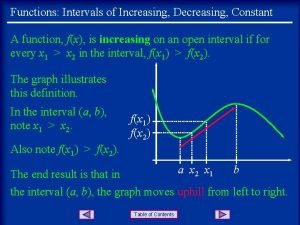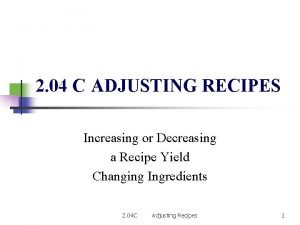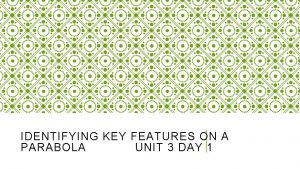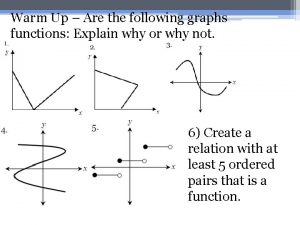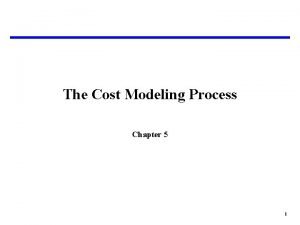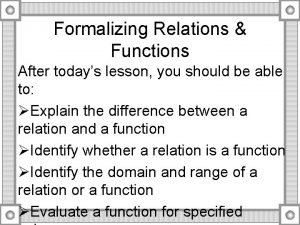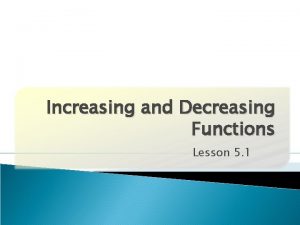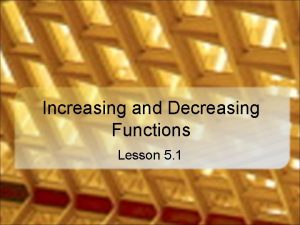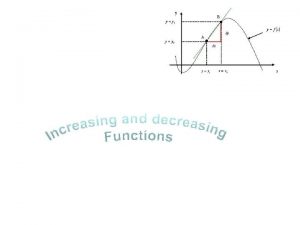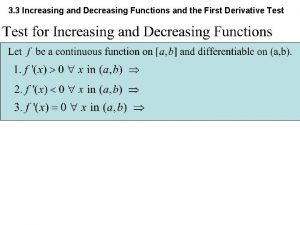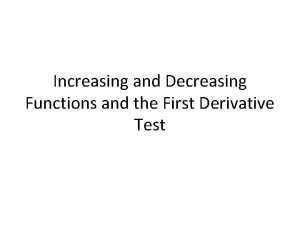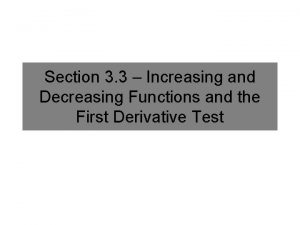Lesson 3 UNIT 4 Increasing and Decreasing Functions















- Slides: 15

Lesson 3 UNIT 4 Increasing and Decreasing Functions and the First Derivative Test

Increasing and Decreasing Functions A function is increasing when, as x moves to the right, its graph moves up, and is decreasing when its graph moves down. For example, the function in Figure 3. 15 is decreasing on the interval is constant on the interval (a, b), and is increasing on the interval Figure 3. 15 2

Increasing and Decreasing Functions As shown in Theorem 3. 5 below, a positive derivative implies that the function is increasing, a negative derivative implies that the function is decreasing, and a zero derivative on an entire interval implies that the function is constant on that interval. 3

Example 1 – Intervals on Which f Is Increasing or Decreasing Find the open intervals on which increasing or decreasing. is Solution: Note that f is differentiable on the entire real number line and the derivative of f is 4

Example 1 – Solution cont’d To determine the critical numbers of f, set f'(x) equal to zero. 5

Example 1 – Solution cont’d Because there are no points for which f' does not exist, you can conclude that x = 0 and x = 1 are the only critical numbers. The table summarizes the testing of the three intervals determined by these two critical numbers. 6

Example 1 – Solution cont’d By Theorem 3. 5, f is increasing on the intervals and decreasing on the interval (0, 1), as shown in Figure 3. 16 7

The First Derivative Test 8

The First Derivative Test After you have determined the intervals on which a function is increasing or decreasing, it is not difficult to locate the relative extrema of the function. For instance, in Figure 3. 18 (from Example 1), the function has a relative maximum at the point (0, 0) because f is increasing immediately to the left of x = 0 and decreasing immediately to the right of x = 0. Figure 3. 18 9

The First Derivative Test Similarly, f has a relative minimum at the point because f is decreasing immediately to the left of x = 1 and increasing immediately to the right of x = 1. The next theorem makes this more explicit. 10

The First Derivative Test 11

Example 2 – Applying the First Derivative Test Find the relative extrema of interval (0, 2π). in the Solution: Note that f is continuous on the interval (0, 2π). The derivative of f is To determine the critical numbers of f in this interval, set f'(x) equal to 0. 12

Example 2 – Solution cont'd Because there are no points for which f' does not exist, you can conclude that x = π/3 and x = 5π/3 are the only critical numbers. 13

Example 2 – Solution cont'd The table summarizes the testing of the three intervals determined by these two critical numbers. 14

Example 2 – Solution cont'd By applying the First Derivative Test, you can conclude that f has a relative minimum at the point where and a relative maximum at the point where , as shown in Figure 3. 19 15
 Lesson 4 increasing and decreasing functions
Lesson 4 increasing and decreasing functions First derivative increasing decreasing
First derivative increasing decreasing Classify each decreasing function as having a slope
Classify each decreasing function as having a slope Strictly increasing and decreasing functions
Strictly increasing and decreasing functions What is interval of increase
What is interval of increase Piecewise function increasing decreasing
Piecewise function increasing decreasing Increasing and decreasing intension and extension
Increasing and decreasing intension and extension How to find increasing and decreasing intervals on a graph
How to find increasing and decreasing intervals on a graph Increasing and decreasing intervals
Increasing and decreasing intervals Increasing intervals
Increasing intervals Increasing and decreasing recipes
Increasing and decreasing recipes End behavior of a quadratic function
End behavior of a quadratic function Increasing at a decreasing rate
Increasing at a decreasing rate Increasing at a decreasing rate
Increasing at a decreasing rate Horizontal asymptote rule
Horizontal asymptote rule Lesson 4-6 formalizing relations and functions answers
Lesson 4-6 formalizing relations and functions answers

